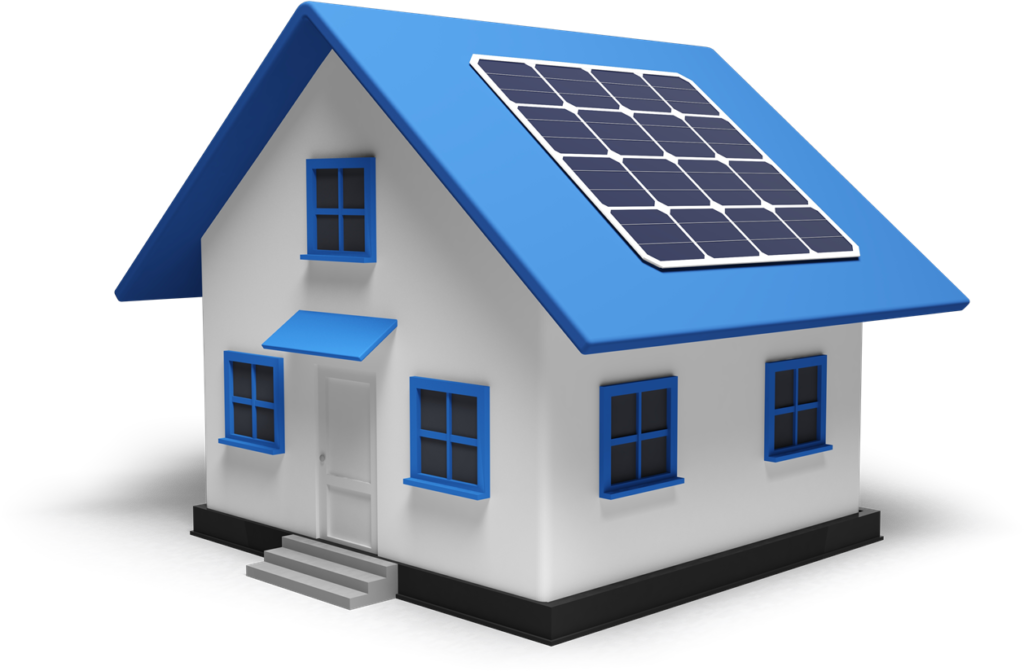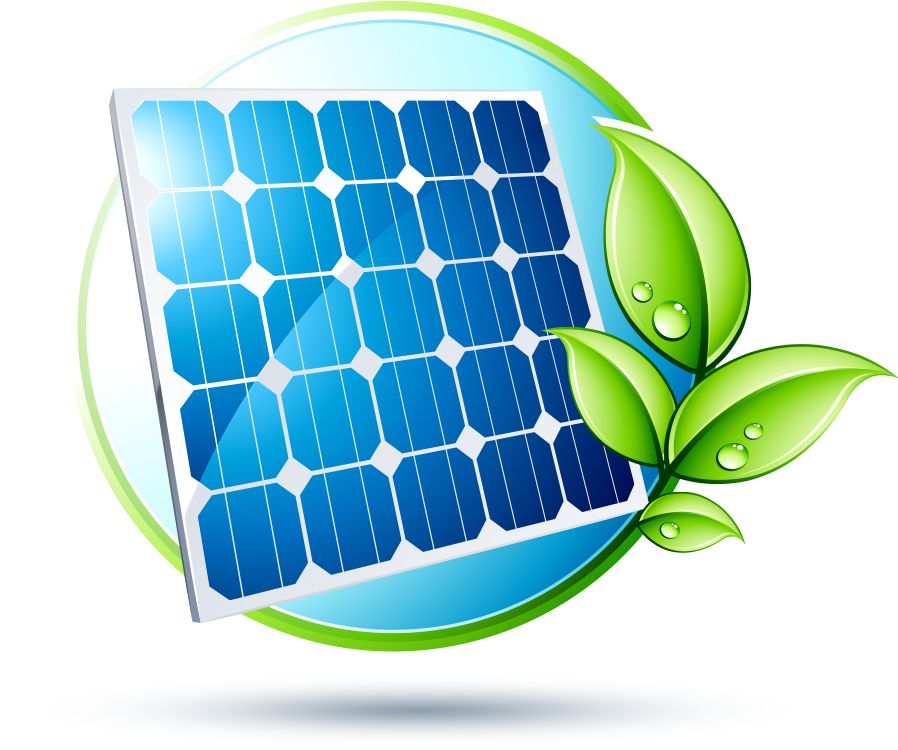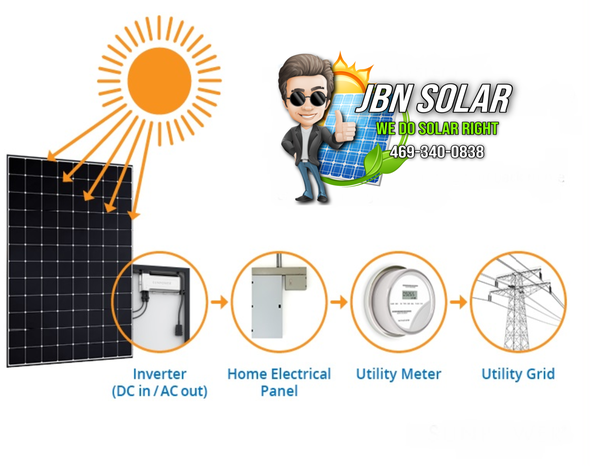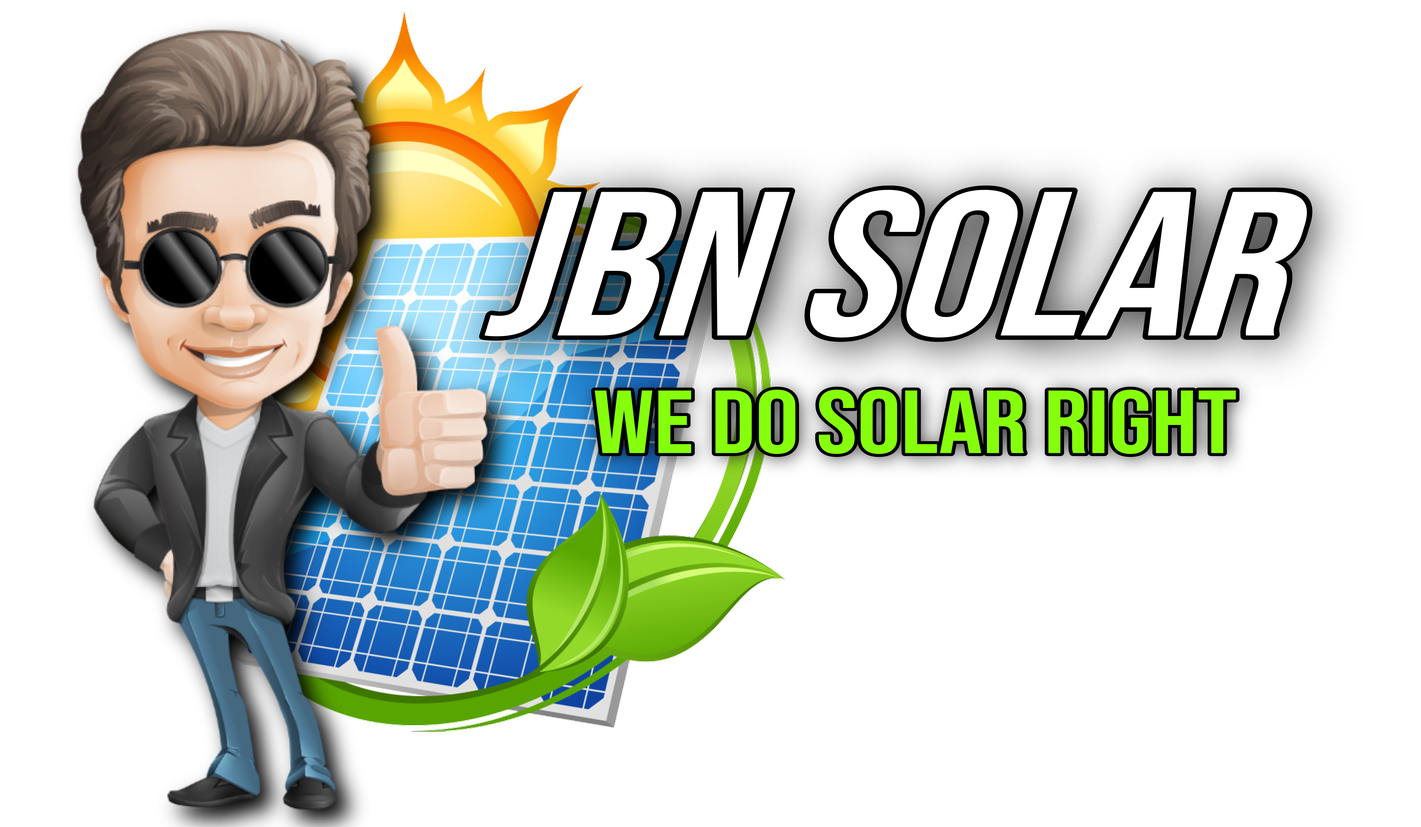How Do Solar Panels Work
How do solar panels work? By collecting the sunlight’s energy and transforming it into electrical energy. Learn more to discover exactly how your solar energy system connects to your home or business and incorporates with your existing electricity framework.
Get Your Free Quote Today!
How do solar panels work for your home of business? Photons from the sun knock electrons out of atoms in photovoltaic cells (pv) to create electricity. Solar panels are made by letting sunlight’s rays pass through them. A panel is made up of several solar cells that are connected together (typically 60 to 72). Each cell has a positive and a negative layer. Together, they create an electrical field that allows for the creation of energy.
The top layer of silicon contains boron, and the bottom layer has phosphatus. These two fields work together to transform the sun’s rays to energy that flows from your panels into your inverter.
How does a solar panel system work?
Here’s a simple example of how a home-solar energy system works. The sun hits the solar panels on the roof. The panels convert the sunlight to DC current which is then transferred to an inverter. The inverter converts DC electricity to AC. This can be used to power your home. It is simple to use and very affordable.
What happens if your solar panels don’t generate enough electricity? What happens at night when your system doesn’t generate power in real time? You may still be able to benefit from “net metering” *
 Grid-tied PV systems often produce more energy during peak hours than the customer requires. The excess energy is then fed back into grid to be used elsewhere. Net metering allows customers to receive credits for excess energy. They can then draw from the grid during the night or on cloudy nights. The net meter tracks the energy sent and the energy received from it. Learn more about net metering.
Grid-tied PV systems often produce more energy during peak hours than the customer requires. The excess energy is then fed back into grid to be used elsewhere. Net metering allows customers to receive credits for excess energy. They can then draw from the grid during the night or on cloudy nights. The net meter tracks the energy sent and the energy received from it. Learn more about net metering.
These benefits are further enhanced by adding storage to your solar system. Customers can store their own solar energy on-site. This reduces dependence on the grid and preserves the ability to provide power for their homes in case of an outage. Software monitoring is included in the storage system. This software monitors solar production and home energy usage to determine which power source to use. Customers can maximize the use of sun, reduce peak-time costs, and store power for later consumption during an outage.
Schedule a consultation to find out how much you can save on your home and business.
Step 1 – The solar light hits your panels’ layers, creating an electric current. Photons and electrons combine to form the electricity.
Step 2 – The electricity flows from the panels to your solar inverter. This transforms the energy from your panels (DC), into usable energy for you home (AC).
Step 3 – The AC energy moves from the inverter right into your breaker box, which will then distribute it throughout your home or business.
Step 4 – All AC that is not used will be returned to your utility meter. It will then remain available for consumption. Some states allow homeowners to return any AC that is not being used to their electric grid by submitting energy credits to their next power bill. This is called net metering in electricity production.

Net metering is a way to transmit any excess energy from your solar panels back to the grid. You are then credited at a 1:1 ratio and can sell that energy for the same price as you bought it. These credits can be used to pay future electric bills. Some utility companies don’t offer net metering. This is a tremendous incentive to solar energy use.
Net Metering: The Benefits
Homeowners can save hundreds of dollars each year by using net metering to lower their utility bills. This is a great reason to go solar as soon as possible.
Net metering also has another benefit. Your solar system generates electricity close to the place it will be used. This reduces the grid’s transmission and distribution infrastructure. It also minimizes energy losses from sending voltage far away from the nearest power station. Some people believe net metering is an unfair burden on customers who don’t use solar electricity. However, net metering cost-benefit analyses have shown the contrary.


